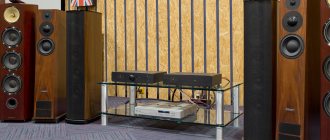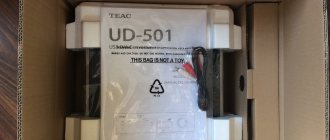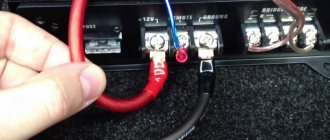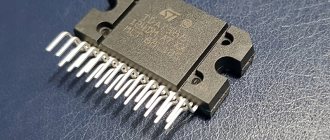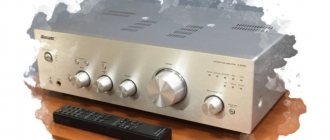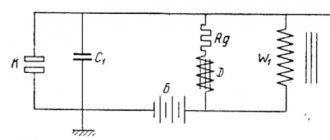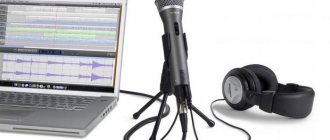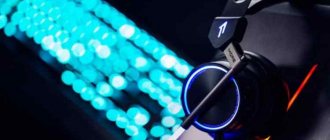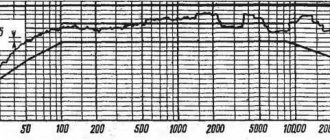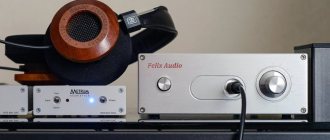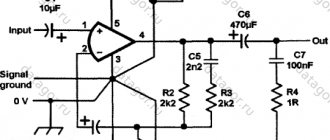According to the datasheet, the NE5532 (SA5532) is a dual low-power bipolar op-amp with bipolar power supply. Compared with similar products such as NE1458, it is characterized by low noise, high bandwidth and high gain. Equipped with protective diodes at the input and a short circuit circuit at the output. Widely used as a preamplifier in high-quality audio equipment and telephony.
The 5532 chip (the symbols “NE” and “SA” are sometimes not given in the designation) was first introduced to the general public by the Dutch Philips (now NXP Semiconductor) in 1979. Thanks to its very good noise characteristics and low distortion level, it became the industry standard for professional audio, and remained the best until the LM4562 from Texas Instruments appeared in 2007. Currently, many electronics manufacturers continue to produce it.
Tsokolevka
Like most microcircuits, the ne5532 is available in standard plastic packages for hole or surface mounting on a board. Accordingly, DIP or SO (SOIC). In most cases, it has eight metal pins, but sometimes there are sixteen-pin specimens. In the latter case, some of the contacts are not used. The pinout is shown in the figure.
The mounting methods on the board can be determined by the markings on the chip. It differs slightly among different manufacturers. For example, at Texas Instruments, devices with the suffix “D” are intended for surface mounting, and with “P” for hole-mount. On Semiconductor uses the symbol “N” to designate a DIP package.
Thus, the identical characteristics NE5532P from Texas Instruments and NE5532N (On Semiconductor) have the same DIP packages, but are designated differently. Other symbols in the marking, in most cases, no longer affect the appearance, but still emphasize individual technical characteristics of the microcircuit.
Schematic diagram
Using this microcircuit and a transformer to match the load (75 Ohms), we obtain a simple circuit (Fig. 1) amplifier for headphones.
The advantages of such an amplifier are simplicity, good sound and unpretentiousness: it is stable when shorted in the load circuit, works perfectly with phones with a nominal impedance of 75 and 150 Ohms (and even 32 Ohms), while preventing direct voltage from reaching headphones.
Due to the use of a transformer, the microcircuit is not overloaded, although the amplifier has a slight coloration of the sound at low frequencies. The presence of a small constant voltage at the outputs of the op-amp (in my amplifier 270 mV) does not create significant bias.
Rice. 1. Schematic diagram of a simple bass amplifier for headphones.
In the design for stereo phones, in addition to the dual operational amplifier NE5532P (DA1), film capacitors K73-17 with a capacity of 1 μF at 63 V (C1, C2) and an imported dual variable resistor with an exponential control curve are used. Output transformer - with any W-shaped magnetic core made of electrical steel with a cross-sectional area of 2...3 cm2.
Windings of the output transformer: primary - 1200 turns with a winding wire with a diameter of 0.1 mm, secondary - 400 turns with a diameter of 0.15...0.18 mm. Winding of all windings is in bulk, first half of the primary, then the secondary and then the second half of the primary.
You can wind both windings at the same time: put four wires together (three with a diameter of 0.1 mm and one with a diameter of 0.15 mm) and wind 400 turns with a series connection of three parts of the primary winding. The author used magnetic cores and frames from transformers from faulty small-sized transformer power supplies.
The amplifier's reproduced frequency band is 30 Hz... 30 kHz at a level of -1 dB. The maximum voltage on the secondary windings of transformers under a load of 75 Ohms is 3.5 V with an input of 0.3 V. It is advisable to select resistors R2 and R3 for both channels in pairs using a digital multimeter.
Blocking ceramic or film capacitors with a capacity of 0.1 μF should be installed in the power supply circuits of the microcircuit. Nonlinear distortions at a real load of 75 Ohms (TDS-5M phones) at a frequency of 100 Hz and 1 kHz are shown in the spectrogram (Fig. 2 and Fig. 3).
Rice. 2. Spectrogram of nonlinear distortions.
Rice. 3. Spectrogram of nonlinear distortions.
Specifications
According to the technical specifications, the NE5532 is almost completely bipolar, with the exception of one field effect transistor in the bias generator. The signal path includes two serial differential stages, a voltage amplification stage and a push-pull repeater with overcurrent protection. There are also four compensation capacitors inside. Let us present the values of the maximum permissible (maximum) parameters.
Maximum parameters
Maximum parameters of the NE5532 chip:
- supply voltage (VS) up to ± 22 V;
- differential input voltage (VDIFF) up to ± 0.5 V;
- input current (IIN) up to 10 mA;
- crystal operating temperature (TJ) up to + 150 oC.
Maximum power dissipation (PD) and thermal resistance are limited by the characteristics of the package in which the chip is housed. Their values can be calculated using the methodology given in the JESD 51-7 standard.
All voltage values given refer to the midpoint (between Vcc+ and Vcc-), i.e. for bipolar power supply. Protective diodes at the input of the microcircuit limit the input differential voltage to 0.6 V. The maximum current should not exceed 10 mA.
Recommended operating conditions
Stable operation of the ne5532 at maximum parameter values is impossible. They are given by manufacturers in the technical description only to reflect the maximum capabilities of the microcircuit. For example, even short-term operation of a crystal at a temperature of +150 oC can lead to overheating and failure of the device. Therefore, the datasheet also contains recommended operating conditions.
The manufacturer's recommended supply voltage ranges from ±5 to ±15 V. The operating temperature should not exceed (TJ) to + 70 oC. Below are the main electrical characteristics.
Analogs
It is not difficult to find a complete analogue of the NE5532; there are currently quite a lot of them. For example, these are the following microcircuits and their modifications: AD823, AD712, LM833, OP275, RC4558. Sometimes, in search of a replacement, radio amateurs seek to improve sound quality. For these purposes, as an alternative, you can consider more modern op-amps: AD826, LM6172, LT1364, LM4562, THS4061.
The NE5532 has no domestic analogues.
Amplifier-designer for headphones on the NE5532P US
PA2134 - top of the first tweaks, inexpensive, softened, slightly colored sound, considered a warm sound, but subs prefer others, 22 V/µs OPA2132 - more expensive but a little better, makes the sound more analytical at the cost of making the lower register lighter
OPA2604 - the sound of the capricious opa2604 turned out to be more believable and airy, close to the original, but the opinion was somewhat divided, four against one in favor of ad8620, a tweak of the basic hfi with vegi
OPA627BP - clear picture, high detail, depth and elasticity of bass, depth of musical prices - what else is needed to meet old age with dignity?... but there is a peak that has not yet been reached - these are two single-channel opa627bp on a 2mono-to-dual dip8 adapter. experiment price from 1500 to 2500 rubles (fcenter.ru)
AD826 or AD823 for stronger bass, or LME49860NA for more detailed and delicious sound across the entire frequency range.
AD8022 - higher output current, which is good for low-impedance headphones, acceptable distortion at 600 Ohms and above, reviews about the difference in sound are mixed, 50 V/µs
AD8066 - only soic8 and msop8, more musical than lm, very deep low frequencies, considered transparent sound, a compromise between 8620 and BB, not aggressive but not casual like bb, i/u similar to AD8620 but somewhat lighter and lighter, 180 V /mks
AD8620 - slightly less noisy than 8066, jfet seems to be better for audio, does not sound good in all circuits, not smooth but not sharp either, in i/u quiet smooth sometimes lacks expressiveness, 50 V/µs
LM4562 - deep and rather sharp lower register on drums, but overly accentuated highs (fcenter.ru) the old one was sluggish, the new one is even aggressive, it is not for a soft sound, it has a specific cold sound, the electronics lack assertiveness of the bass and general softness, 20V/µs
LME49860 - the highest quality of the LMs, an improved version of the LM4562 with increased voltage up to 44v, exceptional detail, surpassed in subjective sound quality all other tested microcircuits in this line (fcenter.ru), pleasant to the ear sound devoid of shortcomings 4562, for more detailed and “tasty” sound over the entire frequency range, 20 V/µs
LME49720 - standard on Auzen X-Fi Forte 7.1, clearly different from LM4562, flat stage with disappearing reverberations (fcenter.ru)
LM6172 - fast, amazingly transparent sound, for jazz and other live recordings (fcenter.ru) has a very soft and airy sound, almost tube-like (REN), on Live/Audigy many people like it more than the 8066, on i/u they are similar to the LT1364 but lighter and lighter, 3000 V/µs
under beyerdynamic DT880 250 Ohm - you can ad8066, ad826, ad8620, ad823, lt1364, ths4062, ths4052 - ears can be attached to ad826, ths4062, ths4052.
... I have low-impedance headphones (40 ohms) I would like a warmer and softer sound, then the 6172 is almost 2 times more powerful than the LME49860 and about 1.5 times more powerful than the AD8066, has a soft sound, and is less noisy at low frequencies than the 8066.
separately for 8620, because in theory it is tougher (tougher!) 8066:
*** with the 8620 the sound is a little more “warm/meaty”; with the 8066 it’s “cool/distant”, but more neutral and accurate, taking into account the fact that the 8066 is cheaper, I recommend starting with them.
*** From my experience with the ad8620, I remember that in i/u its sound was absolutely neutral-gray to the point of some roughness.
*** remember once and for all: do not put single-bit DACs with a low slew rate into the filters, they simply do not “get” what is happening at their input. replaced 8672 (4 V/μs) back with 8620 (50 V/μs) - the tops became so cleaner and more transparent that at first it seemed like they had been cut off.
*** if the toad is strangling, that is, the OU 8022 is three times cheaper, but in terms of technical characteristics it is inferior to the 8620 only in suppressing power interference and consumes a little more current (5mA, still tolerable). the slew rate is the same, noise is less by about 6..10 dB, flat frequency response without distortion throughout the entire audio range, wider bandwidth. kg is also a little less.
*** ad8066 is a great choice. She has an analytical sound, without adverb. all nuances are transmitted very accurately, throughout the entire frequency band. not everyone likes its sound, especially those who are used to enhancers and other colorings. Its area of application is studio equipment, where accurate, uncolored sound is important.
*** if we compare ad8066 and opa2134 in terms of sound quality, the first produces a so-called transparent sound, the second a so-called warm sound. softened, slightly colored sound
*** opa2134 is very “musical”, she manages the middle, vocals, all plucked instruments, wind instruments very beautifully... but she blurs very subtle nuances, very slightly, but masks such things, for example, when when playing the saxophone you can hear drooling flying into kenny g's tool. her (opa2134) path, melodious instrumental amplifiers, produces a very high-quality and beautiful sound. in sound exhaust systems it is quite justified in terms of both price and quality.
*** finally got around to installing opa2132... compared to ad8066 - the ad has a softer, more harmonious sound or something, it seems to dissolve, the opa has a harder, more aggressive sound or something... the first (ad) will probably be more preferable for jazz and its derivatives, oops, the tougher one is good for the meat... for toys, I’ll probably still stick with opa, although both sound normal, and you really need to look for the difference “with a magnifying glass” between them...
Don’t forget that op-amps are not LEGO and the quality of their work in a particular place is largely determined by the “wiring”. For headphones, you need to take an op-amp with a completely complementary powerful output (I call these X-symmetrical). Damn, I couldn’t find a list of them in my bins... TPA6120a2 is an example of an excellent amplifier, but you can’t easily insert it into a card - the case! N
Taken from here forum.radeon.ru/viewtopic.php?f=20&t=42555&sid=b5f3611936ed47dacf27f242cbe1e7fd
